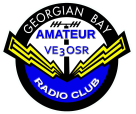2021-02-12, 15:20:46
Hi Frank
It looks like you have managed to pull the inner conductor (and dielectric) of the coax out of the aluminum tube leaving the coax shield and
PVC jacket still inside... Its probably stuck in there pretty well after many years of baking in the sun...
The section from the red-dot at the bottom of the photo, up to the 2 black dots near upper right will be part of the RG213 (50 Ohm) feeder. The transition (splice) to the 1/4 wave matching section is at the “black dots”. So from the black dots to point A(1) is 125 Ohm impedance which connects to the solder lug on the end of the aluminum tubing (point A(2).. This is the exitation point of the dipole element.. The braided shield
of the combination 50 Ohm / 125 Ohm assembly,, (which I assume is still inside the aluminum tubing) will be connected to the tip of the tubing
at the right side of the gap. The gap is then covered / re-inforced with a length of plastic tubing and weatherproofed with heat-shrink sealer..
The aluminum tubing is not a shield.. It is the active radiator of the centre-fed folded dipole element... The middle of the side opposite the
feedpoint (where the support pipe attaches) can be grounded without any affect on the radiation pattern as it is a zero voltage point.
Hope this makes sense !!! 73, P....
It looks like you have managed to pull the inner conductor (and dielectric) of the coax out of the aluminum tube leaving the coax shield and
PVC jacket still inside... Its probably stuck in there pretty well after many years of baking in the sun...
The section from the red-dot at the bottom of the photo, up to the 2 black dots near upper right will be part of the RG213 (50 Ohm) feeder. The transition (splice) to the 1/4 wave matching section is at the “black dots”. So from the black dots to point A(1) is 125 Ohm impedance which connects to the solder lug on the end of the aluminum tubing (point A(2).. This is the exitation point of the dipole element.. The braided shield
of the combination 50 Ohm / 125 Ohm assembly,, (which I assume is still inside the aluminum tubing) will be connected to the tip of the tubing
at the right side of the gap. The gap is then covered / re-inforced with a length of plastic tubing and weatherproofed with heat-shrink sealer..
The aluminum tubing is not a shield.. It is the active radiator of the centre-fed folded dipole element... The middle of the side opposite the
feedpoint (where the support pipe attaches) can be grounded without any affect on the radiation pattern as it is a zero voltage point.
Hope this makes sense !!! 73, P....




